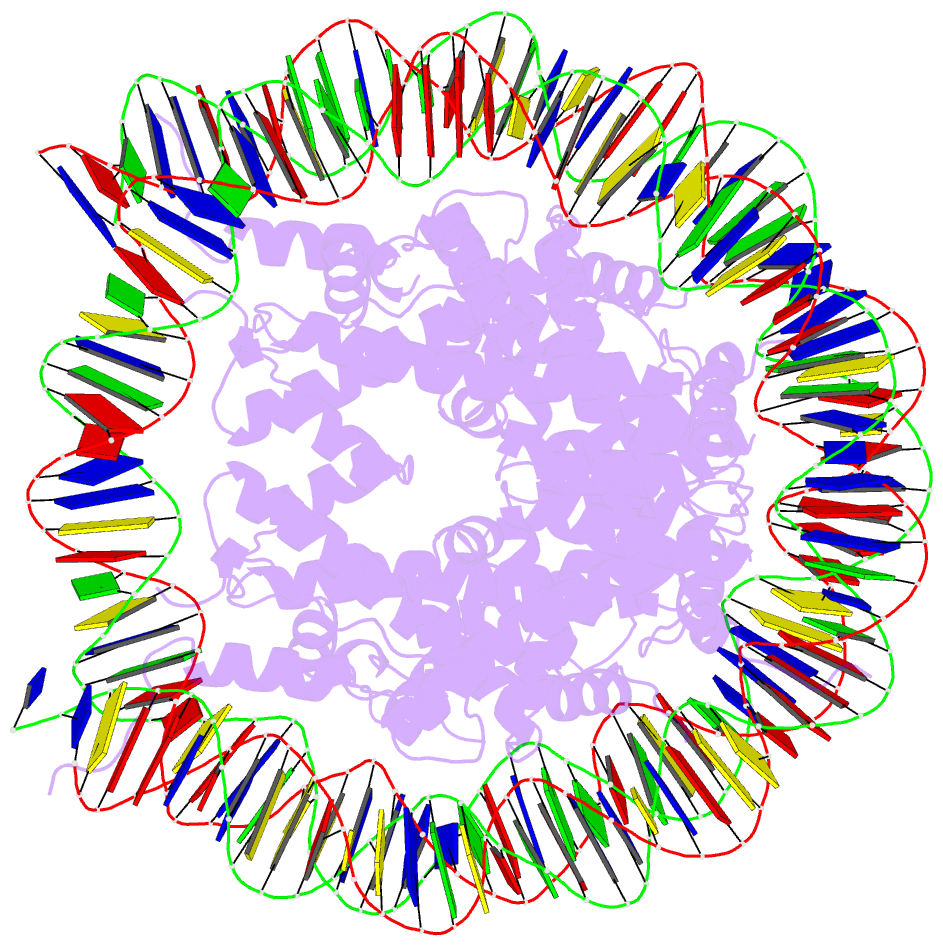Summary information and primary citation
- PDB-id
- 6v2k; DSSR-derived features in text and JSON formats
- Class
- nuclear protein-DNA
- Method
- X-ray (2.6 Å)
- Summary
- The nucleosome structure after h2a-h2b exchange
- Reference
- Hirano R, Arimura Y, Kujirai T, Shibata M, Okuda A, Morishima K, Inoue R, Sugiyama M, Kurumizaka H (2021): "Histone variant H2A.B-H2B dimers are spontaneously exchanged with canonical H2A-H2B in the nucleosome." Commun Biol, 4, 191. doi: 10.1038/s42003-021-01707-z.
- Abstract
- H2A.B is an evolutionarily distant histone H2A variant that accumulates on DNA repair sites, DNA replication sites, and actively transcribing regions in genomes. In cells, H2A.B exchanges rapidly in chromatin, but the mechanism has remained enigmatic. In the present study, we found that the H2A.B-H2B dimer incorporated within the nucleosome exchanges with the canonical H2A-H2B dimer without assistance from additional factors, such as histone chaperones and nucleosome remodelers. High-speed atomic force microscopy revealed that the H2A.B nucleosome, but not the canonical H2A nucleosome, transiently forms an intermediate "open conformation", in which two H2A.B-H2B dimers may be detached from the H3-H4 tetramer and bind to the DNA regions near the entry/exit sites. Mutational analyses revealed that the H2A.B C-terminal region is responsible for the adoption of the open conformation and the H2A.B-H2B exchange in the nucleosome. These findings provide mechanistic insights into the histone exchange of the H2A.B nucleosome.





